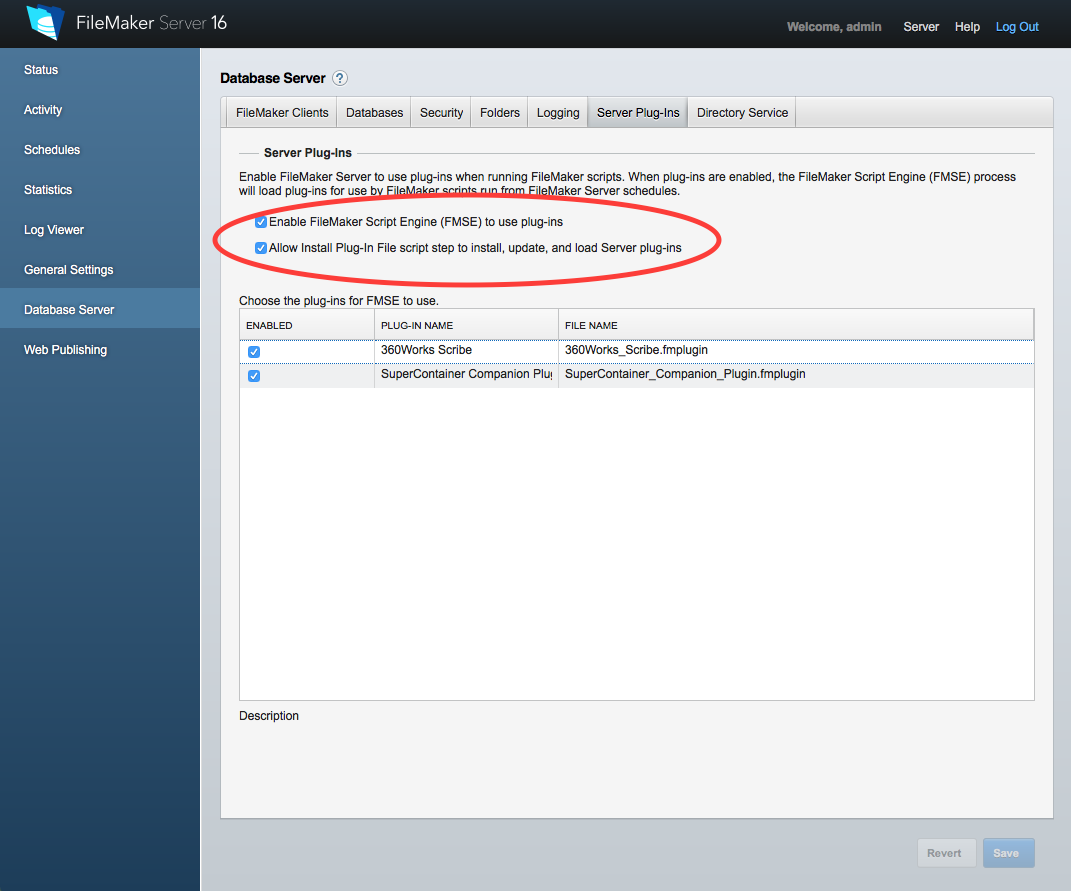

- #Filemaker server side scripts how to
- #Filemaker server side scripts full
- #Filemaker server side scripts pro
#Filemaker server side scripts how to
A knowledgable developer will known how to squeeze every bit of performance out of the environment they've chosen to develop within. Like any thing else in the world of tech, there are less efficient implementations and highly optimized solutions.
#Filemaker server side scripts pro
However, the first few times any number of users start complaining about the workflow taking too long, is when you may need to evaluate your architecture.įor sure, FileMaker Pro is a very capable platform. Simply creating a single FileMaker file to store your data is a perfectly fine way to start your solution.

Fortunately, this video will provide you with all the know-how! Using PSoS is simply a matter of understanding what’s happening server side and knowing how to troubleshoot. Need to communicate with other web services via ODBC, SQL, REST, SOAP (pick your acronym)? Want to send bulk HTML email using an online service like Amazon’s SES mail sending? Need to automate a routine import which normally task just a bit too long? Because of what you can do on the server side, there are few, if any limitations. While certain script steps like Export Field Contents cannot be used with Perform Script on Server, there is a wealth of functionality which can be harnessed through the use of server side plug-ins. If your FileMaker solution has any number of users, beyond a very small number, then the performance gains can be quite significant for certain tasks. With the subsequent release of FileMaker 14, and FileMaker Go 14 in particular, the advantages of Perform Script on Server simply can’t be overlooked by anyone creating solutions within FileMaker Pro. Yeah, developer’s recognized it, but didn’t really know how to value its power. When FileMaker 13 was released, one of its sleeper features was Perform Script on Server. You can, however, with a few setup changes, make your local development machine use FileMaker Server in order to facilitate the ideal development environment. One possible issue is that FileMaker Server has be structured for a production environment and not for a development. If you're still developing locally with just a copy of FileMaker Pro Advanced then this video should be especially appealing.Īlso, if you're a developer on-the-go and you can't be tied to a local network, and may not have WAN access, then running a local FileMaker Server is a great solution. When FileMaker Server is within your development environment it provides crash protection, automated backups and other learning benefits which you simply won't get if you only upload your FileMaker file to a host and simply work that way. For FileMaker development, the solution to this problem is to always develop using FileMaker Server. It's like you're constantly looking over your shoulder waiting for the next FileMaker crash. Having that looming fear that your application or file may crash at any time is not a happy place. The worst feeling in the world, while developing, is one of instability. Unless you're in the process of learning a new environment, not that many developers are keen to spending a bunch of time re-configuring their development environment. Whether you're a hobbyist developer or a full-time professional, it's important to make sure your development environment is both stable and reliable. If you're interested in making this process happen as quickly as possible, then using Perform Script on Server is what you should learn to use. This video specifically covers how to restore the user context for processing a found set of data. That is, the proper layout and the exact same found set to be used for processing the data. One of the biggest issues with running server side scripts with Perform Script on Server is the fact that you need to know what's happening when the script is running, how to troubleshoot and most importantly, how to replicate the current user context. While there are still various limitations, such as the number of simultaneous server side scripts, it's absolutely something that any serious FileMaker developer needs to know how to use. With the addition of Perform Script on Server we gained a REALLY BIG performance boost by being able to perform most any script on the server. Many times, FileMaker does it's best to optimize whatever is being done, but it's still not as fast as executing certain things directly on the server.
#Filemaker server side scripts full
The processing of a script, client side, always had, and still does, make a full round trip for all kinds of these processing activities. Prior to FileMaker 13 we never even had the option of performing scripted tasks where the data actually exists. Show all content Videos about "filemaker server"


 0 kommentar(er)
0 kommentar(er)
